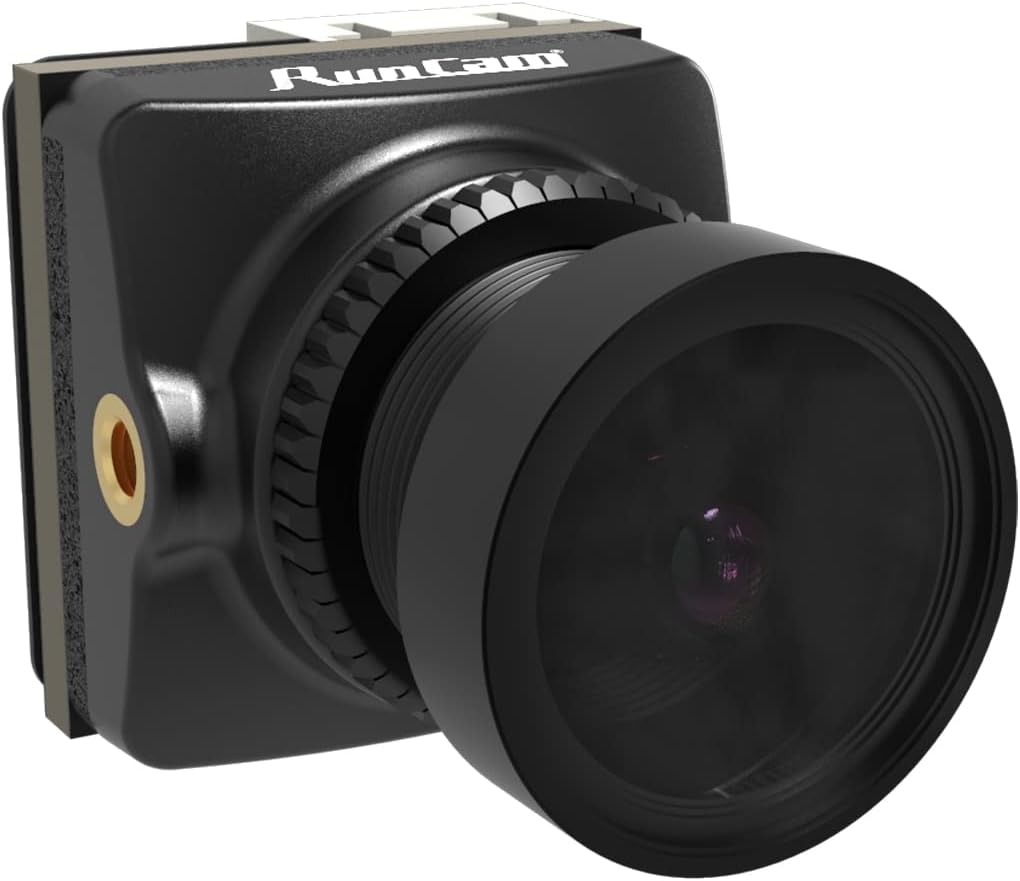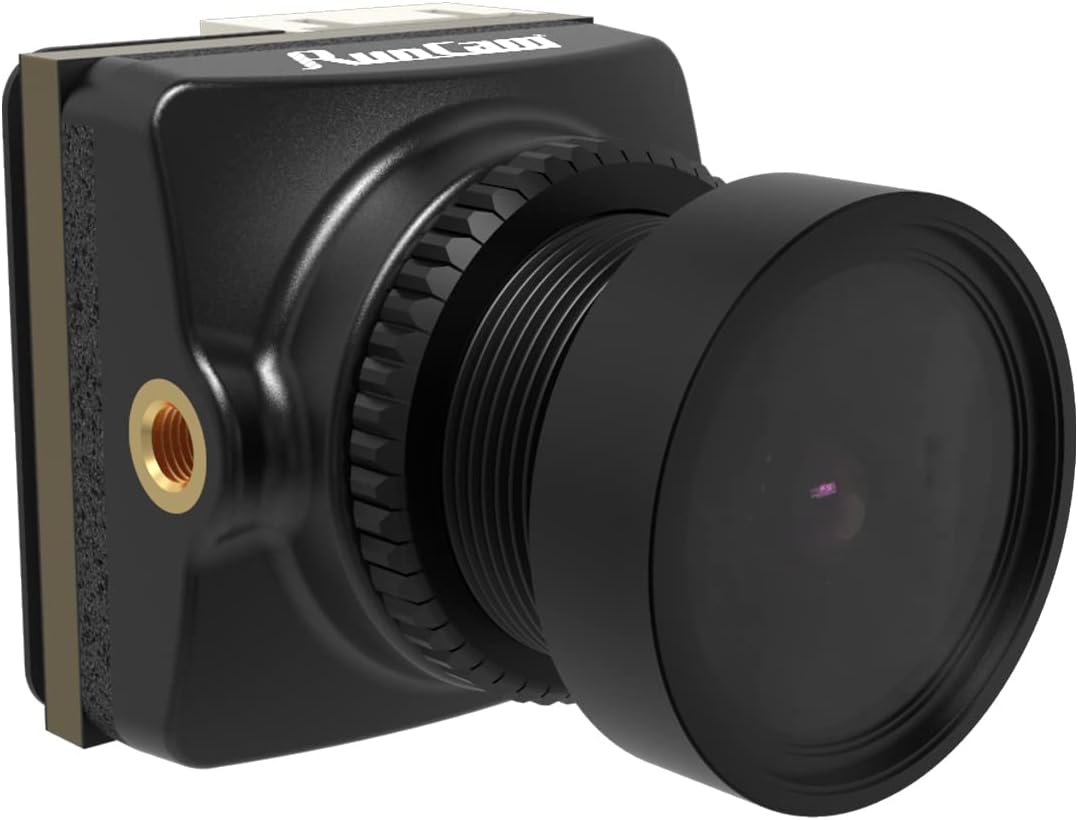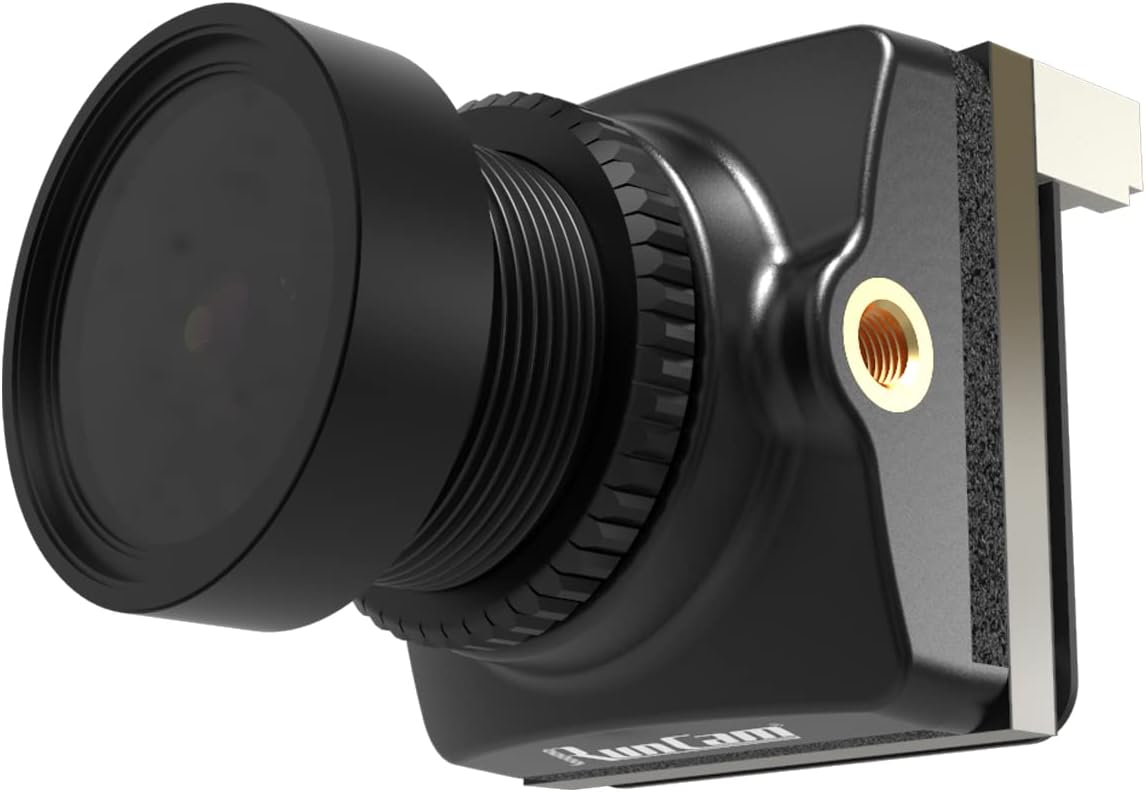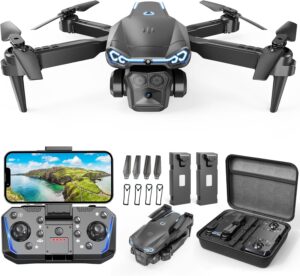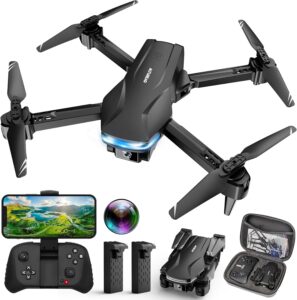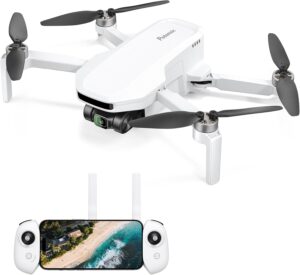Have we ever tried flying through a moonlit field and thought, “If only the world stopped pretending to be a smudged charcoal drawing”? We have, and that’s exactly when we picked up the RunCam Night Eagle 3 Micro FPV Night Camera 1000TVL Support OSD for FPV Drone Night Fly and decided to give our nocturnal habits a proper upgrade.
What is the RunCam Night Eagle 3 Micro FPV Night Camera?
We like to think of it as our night-owl wingman. Compact and almost suspiciously light, this micro camera promises a startlingly bright view of the dark thanks to its starlight sensor. It’s designed for analog FPV pilots who want to keep flying when the sun clocks out and the street lamps begin their mood lighting.
We’re looking at 1000TVL resolution, WDR video processing, a switchable 16:9/4:3 image, and an integrated OSD that lets us see essentials like battery voltage, pilot name, and a timer. It supports PAL/NTSC, uses joystick control for setup, and claims low latency around 26.2 ms—fast enough that our fingers won’t feel betrayed by our eyes.
RunCam Night Eagle 3 Micro FPV Night Camera 1000TVL Support OSD for FPV Drone Night Fly
Who Is This Camera For (and Who Isn’t It For)?
We’ll put it plainly: this is a camera for analog FPV pilots who want professional-grade night vision. If we fly freestyle after sunset, drift through parks at dawn, or ride the twilight line for cinematic lines, we’re in the club. It’s also lovely for those of us who prefer analog’s organic feel and immediate response.
It’s not for people who only fly at high noon or who are committed to digital HD systems and want pristine 1080p DVR footage without any analog texture. It’s also not the right pick if we’re hoping to rely on daytime color accuracy as a priority—night vision is the headliner here.
Key Features at a Glance
We love a clean snapshot of what we’re getting, especially when the sun’s down and our attention span follows it. Here’s our quick breakdown.
| Feature | What It Means for Us |
|---|---|
| Professional starlight night FPV camera | Ultra-high sensitivity back-illuminated sensor gives us a bright image in very low light. |
| Sensitivity: 11390 mV/Lux-sec | Translation: it sees in the dark far better than our retinas after too much coffee. |
| Resolution: 1000TVL | Sharp for analog, with fine detail and recognizable textures. |
| WDR video system | Helps balance highlights and shadows, so we don’t lose detail to streetlights or deep shade. |
| 16:9 and 4:3 switchable | Lets us match our goggles’ aspect ratio and personal preference. |
| Integrated OSD (voltage, pilot name, timer) | Useful display without extra wiring or add-ons. |
| Low latency (~26.2 ms) | Keeps our flight feel responsive and trust-worthy. |
| PAL/NTSC switchable | Matches regional standards and personal taste. |
| Joystick control | Menu setup with little fuss; no laptop needed. |
| Net weight: ~8.5 g | Micro form factor that won’t throw off our build balance. |
Design and Build Quality
We appreciate how the Night Eagle 3 Micro feels purpose-built: solid housing, micro footprint, and that “put me on a 3-inch frame and I’ll still look good” energy. At roughly 8.5 grams, it’s practically a gentleman’s whisper in the hand.
Its form factor plays well with most micro mounts commonly found on racing and freestyle frames. We’ve banged it around a bit (purely for science), and the housing handled the usual FPV indignities with a stiff upper lip.
Starlight Sensor: What the 11390 mV/Lux-sec Sensitivity Means
We’ll be honest—this number sounds like something we’d pretend to understand at a dinner party. In practical terms, it means the sensor is extremely sensitive to light, and the “back-illuminated Pixel technology” helps squeeze more from minimal light sources. The result: a brighter, clearer image in near darkness.
In the real world, shadows become pathways, grass becomes individual blades, and distant trees stop impersonating cardboard cutouts. We can see texture, not just outlines.
1000TVL Resolution and the Realities of Analog Sharpness
Analog resolution numbers can be slippery, but 1000TVL on a good lens and sensor combo translates to crisp lines and recognizable detail, especially in mid-tones. We’re not talking GoPro-level clarity; we’re talking reliable analog sharpness where branches, power lines, and twigs are visible enough to avoid. Most of us would rather see the twig before it sees us.
On DVR playback through a standard analog recorder, we noticed the usual analog softness, but on decent goggles with a good receiver, the picture lands in that satisfying sweet spot: sharp enough to inspire confidence, forgiving enough not to punish our souls.
WDR: The Streetlight Savior
WDR (Wide Dynamic Range) is the difference between a white-hot halo around a lamp and a scene where we can still make out what’s lurking nearby. The Night Eagle 3’s WDR feels balanced rather than dramatic; it doesn’t crush blacks or blow highlights to oblivion. We stay oriented when transitioning between lit streets and dark trails.
We especially appreciate WDR performance when we pop out from under trees into open areas or when a car’s headlights turn up uninvited. Our horizon doesn’t vanish into sudsy bloom.
16:9 vs 4:3: Picking Our Frame
We’ve gone back and forth on this one. In 4:3, the vertical field of view feels generous, which is handy for freestyle and racing gates where top-bottom awareness matters. In 16:9, there’s a cinematic vibe that makes our DVR clips feel more “finished,” especially on widescreen goggles or viewers.
Switching formats is simple and gives us the freedom to match our display gear. We usually default to 4:3 for technical flying and save 16:9 for cruise nights when we want drama with our throttle.
Latency: The Burden of Trust
The Night Eagle 3’s latency lands around 26.2 ms (on par with CCD-class responsiveness), which we experience as immediate and trustworthy. Our fingers, eyes, and drone come to a gentleman’s agreement: nobody will betray anybody else. We accelerate through low light without feeling like we’re piloting by postcard.
For racers who live by milliseconds, this is still a comfortable window. For freestyle pilots, it’s more than enough to thread lines at dusk or skim tree trunks at night.
Integrated OSD: The Data We Want, Without a Wiring Circus
We’re huge fans of OSD that’s integrated into the camera. The Night Eagle 3’s overlay offers three things we actually want mid-flight: battery voltage, pilot name (for our egos and our DVRs), and a timer. It’s simple, uncluttered, and legible in low light.
We also noticed it stays readable even when WDR is working overtime, which speaks to smart scaling and font choice. The OSD feels more like a neat desk than a colorful bulletin board.
Joystick Control: Small, Low-Tech, and Weirdly Satisfying
There’s something calming about clicking through a camera’s settings with a tiny joystick, like playing a polite video game. We can switch PAL/NTSC, change aspect ratios, adjust exposure-like options, and set up our OSD preferences without connecting a computer.
The interface has the expected utilitarian elegance. We nudge, we click, and before we know it, the image looks like the night scene we’ve been hoping for.
PAL/NTSC: Choose Your Flavor
We won’t pick a side in this endless debate. PAL often feels slightly less flickery with a pleasing cadence; NTSC can look a touch snappier depending on our gear. The Night Eagle 3 lets us switch to match our goggles and recording devices, which is what matters.
We recommend marrying this setting to whatever our DVR prefers because mismatched standards can be the kind of love story that ends with a blank screen.
Day vs Night: The Split Personality We Appreciate
We’ll say it: plenty of “night” cameras can look flat during the day. The Night Eagle 3 manages daytime just fine, with contrast and detail that feel normal for analog and a gentle handling of harsh sun. But when the sun goes down, that’s where it really earns its supper.
At night, it pulls details from shadows without exploding highlights, and textures remain visible. We recognize gravel, branches, bark, all the tactile cues our brains depend on to avoid poetic crashes.
Day Flight Impressions
On daytime flights, the image lands between clean and slightly soft—good analog texture, not oversharpened. Colors aren’t the main event, but they’re naturally presented. Overexposure control is calm, and WDR keeps sky and ground civilized.
We wouldn’t buy it exclusively for midday racing, but it’s perfectly competent if we forget it’s night-focused and treat it like an everyday camera.
Night Flight Impressions
This is where the Night Eagle 3 feels almost theatrical. Dim alleys become navigable corridors, park paths take on definition, and tree lines reveal enough structure to keep us honest. Grain and noise are well-managed for a starlight camera; the image is bright without blowing out every bulb like a detective spotlight.
Street lamps, porch lights, and the moon become allies rather than enemies. We start to recognize “good light” the way photographers do, plotting routes like nocturnal urban planners.
Installation: What We Actually Needed to Do
Mounting the Night Eagle 3 is straightforward. The micro form factor fits most modern frames with micro camera mounts, and the weight keeps our CG happy. We connected power, video, and OSD according to the wiring diagram, and everything woke up without melodrama.
As always with analog cameras, we kept our wiring tidy, used a good ground, and made sure the video signal line played nicely with our VTX. A few zip ties later, we were ready to take the night shift.
Tuning the Image with the Joystick
We start with the default settings and only tweak exposure, WDR strength, and OSD layout. Minor adjustments go a long way in low light. We keep sharpening conservative—overdoing it can turn shadows into glitter.
We also set the aspect ratio early on, to avoid re-centering mental framing mid-ride. Once set, we barely revisit the menu.
Compatibility: Goggles, VTX, and Frames
Because this is analog, we used it with our standard 5.8 GHz VTX and analog goggles/VRX. We matched PAL/NTSC to our recording setup, and both 16:9 and 4:3 modes worked fine on modern goggles. On older displays, 4:3 was safer to avoid stretching or weird scaling.
Frame-wise, most micro and standard frames with adaptable mounts will take it. Gimbal clearance is good on larger cinewhoops, and the weight makes it practical even for sub-250g builds.
Power and Heat: Reasonable and Well-Behaved
Analog cameras typically sip power, and this one is no different in our experience. We didn’t notice any heat-related quirks, and the housing didn’t become a toaster after a long idle. For exact voltage input and current draw, we defer to the manual; we simply ensured clean power from our flight controller or a well-filtered source.
If we’ve got noisy power, a small capacitor on the main leads is often the easiest peacekeeper in the kingdom of analog.
Durability: Because We Kiss Trees Sometimes
It’s not indestructible—very little is—but the casing survived our usual tumbles and emergency landings with dignity intact. We recommend a lens protector if our frame allows it, especially for wooded flights. Mud and dust wipe away easily, and the lens element didn’t scratch under normal abuse.
We wouldn’t toss it into the ocean, but it survived mist and cold just fine. For really wet weather, we added a bit of conformal coating to exposed joints on the quad (not the lens, obviously).
Real-World Flying: How It Feels Out There
If we had to sum up the feeling, it’s this: flying at night used to be an act of faith; with the Night Eagle 3, it becomes an act of judgment. We can see enough to make reasonable decisions instead of pleading with the shadows.
We tried suburban streets, park trails, and a few industrial backlots that appeared harmless in broad daylight and vaguely haunted after dark. The camera kept us calm, and the goggles felt like they knew what we were after.
Racing at Dusk
With the sun scraping the horizon, gates remained visible longer than we expected, and WDR managed that “last light” blowout in a way that felt almost polite. We found ourselves pushing laps after everyone else started packing up, which, honestly, is sometimes worth the price of admission.
Freestyle at Night
This is the mood lighting we wanted. Power loops under sodium lamps have an atmospheric presence that colors can’t quite replicate. The camera’s brightness turns risky guesses into semi-informed attempts, which for us is the difference between a nice clip and a sad walk.
What We Love and What We Don’t
It helps to be blunt. We can adore something and still side-eye its quirks.
- What we love:
- Night visibility that feels reassuringly bright without cartoonish bloom
- 1000TVL clarity that makes analog feel precise
- WDR that saves our eyes from headlight horror
- Integrated OSD that shows exactly what matters
- Switchable 16:9/4:3 and PAL/NTSC for compatibility sanity
- Latency low enough to trust our instincts
- What we don’t:
- Not the most colorful daytime performer (it’s not trying to be)
- Menu joystick can be easy to misplace if we’re chaotic by nature
- Analog DVR will never look like digital HD, no matter how much we wish upon a star
Tips for Better Night Footage
We learned these the charming way—by doing things wrong first.
- Fly under soft, consistent light sources when possible. Moon, distant city glow, uniform streetlights.
- Avoid pointing straight at bright bulbs for long; WDR helps, but dazzling is still dazzling.
- Keep the lens clean. Night lights exaggerate smudges like a detective lamp on a fingerprint.
- Don’t over-sharpen. It turns grain into confetti.
- If our VTX supports it, use clean power and keep the antenna robust—signal breakup is extra jarring in the dark.
- Consider a neutral filter only if we’re dealing with aggressive highlight bloom; otherwise, let the sensor breathe.
Common Questions We Had (and Answered)
- Will this replace my digital setup?
- No. This is analog glory with night vision flair. If we need HD DVR footage, we’ll still carry an HD cam or stick to digital systems. But for real-time piloting in the dark, this fills the gap beautifully.
- Can we use it for daytime?
- Yes. It’s competent in daylight, but its superpower is night flying. If we mostly fly sunny weekends, there are daylight-optimized analog cams that might suit us better.
- How’s the latency for racing?
- Tight enough to feel immediate. Around 26 ms keeps fingers and brain in harmony.
- Is the OSD readable at night?
- Yes. Voltage, timer, and name look crisp even under WDR’s watch.
- Does aspect ratio matter?
- For feel, yes. 4:3 helps with vertical awareness; 16:9 feels cinematic. We choose based on terrain and taste.
Troubleshooting Night-Nasties
If the image looks off, we triage like this:
- Image too bright or blooming around lights?
- Dial down exposure or highlight settings in the menu; try a gentler WDR profile.
- Grainy with weird shimmer?
- Check power filtering; ensure good ground. Consider adding a capacitor to the main leads.
- Washed colors or odd tint?
- Sometimes analog receivers interpret things differently; try PAL/NTSC switch or adjust color settings minimally.
- OSD flicker or missing overlay?
- Verify the camera OSD is enabled in the menu and make sure our VTX isn’t stripping overlays.
- Aspect ratio looks stretched?
- Match the camera’s 4:3/16:9 setting with our goggles’ native display mode.
The Value Proposition: What We’re Paying For
We’re paying for confidence in the dark. If night flying is a novelty, then sure, this is a luxury. If it’s our weekly ritual or the only time our schedule allows, the Night Eagle 3 feels more like a necessity—a new set of eyes that doesn’t quit at sunset.
Add in the integrated OSD, low latency, and micro size, and the economics get friendlier. It consolidates features we’d otherwise cobble together.
Analog vs Digital at Night: A Polite Comparison
We love our digital systems, but in very low light, many digital setups struggle with noise and motion smearing, or they need more ambient glow to keep things coherent. Analog, blessed with its graceful degradation, often remains flyable where digital becomes unhappy.
The Night Eagle 3 plays to analog’s strengths. If our priority is navigation and feel rather than DVR glamour, we get more usable night flights out of this than we do wrestling with a digital feed in the same conditions.
Mounting and Frame Fit Notes
We’ve had luck on both micro and 5-inch frames. On tight builds, the micro footprint helps us avoid awkward camera plates. If our frame allows for side plates with adjustable tilt, we get the best results angling slightly downward when flying under streetlights or canopy, and slightly upward when skimming open fields under the moon.
For cinewhoops, the reduced weight helps maintain that predictable, balanced float we all secretly love.
WDR Tuning Nuances
We treat WDR like seasoning. Too little, and we lose detail in harsh transitions; too much, and the image can look flat or slightly ethereal. With the Night Eagle 3, we favor a middle setting and only add more when our route is full of head-on lights.
Sodium lamps and LEDs behave differently; our best results came when we tuned during the specific kind of night lighting we expected to fly most often.
Recording Our Flights: Managing Expectations
Analog DVRs are notorious minimalists, compressing our proudest moments into artifacts and soft edges. The Night Eagle 3 will look better live in the goggles than on a cheap DVR. If we want a souvenir, we can use a better-quality ground station or onboard analog DVR, but real-time clarity is where this camera shines.
It’s the feel of the flight that matters most at night—and in that arena, it delivers.
Longevity and Care
We keep a spare lens cap in our field bag and a microfiber cloth in our pocket for those impromptu glove-wipe moments that always backfire. If we fly in places where insects want to be stars, a quick cleaning between packs keeps ghost halos at bay.
After dusty flights, a gentle burst of air around the housing and mounts helps prevent grit from turning into a grinding soundtrack on the next session.
Safety and Courtesy After Dark
We’ve learned to fly after-hours with a modicum of discretion. We avoid neighborhoods at bedtime and skip places where our quad could startle people or wildlife. Parks are better than parking lots, and open fields are better than alleyways that look like a detective novel cover.
Good lighting doesn’t excuse poor judgment. We treat our night flights like a quiet ritual and leave no evidence except footprints and a smug sense of satisfaction.
Where It Fits Among Alternatives
In the analog night-vision niche, the Night Eagle lineage has a reputation: strong low-light performance with minimal fuss. Competing starlight cameras from other brands often trade blows on color science, sharpening, and menu options. Where this camera stands out for us is its balance—bright night image, fair WDR, pragmatic OSD, and truly usable latency.
If we’re coming from a strictly daylight camera, the difference at night feels like magic. If we’re upgrading from an older starlight model, we’ll notice the cleanliness and stability more than raw brightness alone.
Realistic Limitations
Every camera has a kryptonite. The Night Eagle 3’s is small, intense point lights right in the lens—no sensor is delighted by those. We also accept that analog DVR will compress and muddle our proudest low-light moments, and that during the brightest parts of the day, the image feels tuned for different priorities.
Our workaround is simple: match the tool to the job. When night is the job, this feels like the right tool.
Field Notes: Three Nights We Won’t Forget
- The moonlit soccer field
- The grass looked like velvet, and we could trace white lines that had faded even to our naked eyes. Our turns were smooth, our landings less guessy.
- The tree-lined path
- We hugged the trunks like old friends, and the sensor teased out bark detail that kept us honest. Head-on lamps were tamed enough to keep our line clear.
- The industrial backlot
- Harsh lamps, reflective surfaces, and weird shadows. WDR kept the scene usable, and the OSD timer saved us from overconfidence with battery life.
Pros and Cons, The Snackable Version
- Pros:
- Excellent night visibility with a natural look
- WDR that calms harsh transitions
- Low latency that feels “connected”
- Switchable aspect ratio and video standard
- Integrated OSD with just the right information
- Micro size and weight make builds easy
- Cons:
- Not our first choice for color-rich daytime flying
- Analog DVR can’t fully show what goggles see
- Bright point-light sources can still bloom, as they do on most cams
If We’re Upgrading, What Changes?
Coming from a daylight-optimized analog camera, we notice:
- Immediate improvement in shadow detail and route confidence at night
- Reduced guesswork near streetlamps and under trees
- More consistent exposure across mixed lighting
Coming from an older starlight cam, we notice:
- Cleaner image balance with less obnoxious bloom
- Smoother WDR transitions
- A snappier, more trust-worthy feel in fast lines
Little Conveniences That Add Up
We didn’t expect to enjoy the integrated OSD as much as we did. Having voltage and timer right there, consistent and legible, meant fewer glances at our flight controller OSD graphics. The joystick-driven menu remains old-fashioned in the best way—no apps, no firmware cables, just a simple interface and instant changes.
Small details are what make us keep a component on our quad long after the review is over.
A Few Settings We Keep Returning To
- Aspect ratio: 4:3 for technical trees and gates; 16:9 for airy cruises
- WDR: middle setting for mixed lighting; slightly higher for street-heavy routes
- Sharpness: modest; too much creates sparkling shadows
- OSD: voltage top-left, timer bottom-right, name center-top—easy to read without clutter
The Feel Test: Does It Make Us Fly More?
Unquestionably. The biggest compliment we can give a night camera is that it makes us want to go out again when the world quiets down. The Night Eagle 3 Micro gives us a clean enough window into the dark that flying becomes less performance art and more a normal hobby that simply happens after dinner.
There’s a calm to the image that keeps us relaxed. And a relaxed pilot flies better.
Final Advice Before We Hit Arm
- Check aspect ratio and PAL/NTSC before first flight; mismatches are annoying mid-air.
- Clean the lens and tighten the mount; wobble plus glare is a bad duet.
- Start with conservative WDR and nudge up as needed under artificial lights.
- Practice on routes with soft, even lighting before tackling the nightclub district of street lamps.
Our Verdict
If night flying is part of our life—or we want it to be—the RunCam Night Eagle 3 Micro FPV Night Camera 1000TVL Support OSD for FPV Drone Night Fly is the dependable, low-drama choice that shifts darkness from obstacle to ambiance. Its starlight sensor does the heavy lifting, WDR keeps the scene believable, and the low latency makes our hands trust the picture.
We’re not replacing digital HD with this; we’re choosing reliable analog vision when it counts most. Between the integrated OSD, switchable formats, and easy setup, it’s the kind of camera that just works and then keeps working while we forget we ever worried about the dark. And that, in our book, is the highest praise for night gear: it lets us fly like it’s daytime, only quieter, softer, and a little more ours.
Disclosure: As an Amazon Associate, I earn from qualifying purchases.
